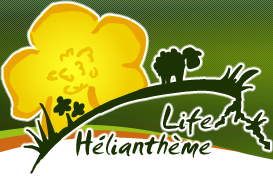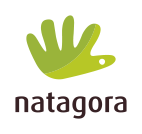The project’s « actions »
The project consists of several parts :
« prepare » : The project’s first year will mainly be dedicated to making an initial survey of each meadow site. This analysis will enable the project team to make up a restoration plan for each site, a real management chart for the actions to be taken during the project.
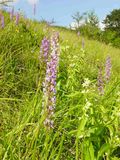
« protect » : To sustainably protect the sites of dry meadows or calcareous rocks, turning them into nature reserves might be necessary. A protection programme will be carried out by the project team, aiming at the purchase of numerous hectares of abandoned land and at making arrangements with the owners. The objective is to ensure the protection of 50 ha of dry meadows that are today degenerated, in order to introduce there the necessary restoration measures and management.
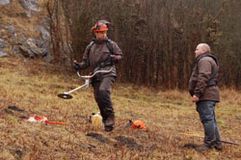
« Restore » : These sites’ restoration is one of the LIFE Hélianthème project’s main tasks. In a period of 5 years, a series of actions will be taken, the objective of which is to rejuvenate the calcareous meadows and rocky environments. These actions will be adapted according to the initial situation : reforested environment (black pine tree,…), an environment taken again by thick-leaved vegetation and an environment overgrown by gramineous vegetation.
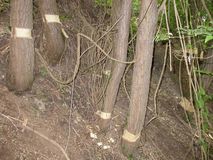
« Fight invasive plants » : Three exotic timber species, the false acacia, the glandular Ailanthus and the horizontal cotoneaster will particularly be focused on in this project. Indeed, the reproduction (by means of seeds or suckers) and germination power of these species is so strong that all of the stricken meadows are in danger. Selective cutting, mowing, pulling up will thus be planned all through the project in order to restrict these species’ expansion.
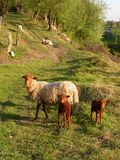
« Develop grazing » : Restoring a network of meadows also means providing again performing structures for grazing that are economically livable for the breeders who are partners in the project. This way, two large grazing points were created in the Montagne St Pierre and in the mid-Ourthe so that the various meadow clusters that will be restored can be grazed on. On both of these grazing points, folds will be installed to house the large flocks of sheep in winter. The grazing sites will be equipped with fences, since an alternate grazing site is nowadays unfortunately not possible anymore…
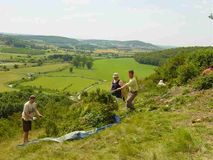
« Mechanical and voluntary management » : Recurring management of the meadows restored by LIFE will mostly be taken care of through grazing sheep. Yet, to keep conditions optimal for the development of meadow species, grazing must be combined with mechanical interventions such as mowing plants left uneaten, removing timber or also clearing bushes. This management would not be possible without volunteers’ remarkable work.
To sustain and help all of these fanciers as much as possible, the LIFE Hélianthème project will provide them with the material that is needed for this management : small tools, chain saw, flail slasher… Trainings and round-table conferences will also be offered and they will deal with topics such as grazing on dry meadows, ecological corridors, the follow-up of plant and animal species, operating machines... They should enhance the efficiency of actions taken and most of all ensure optimum security.
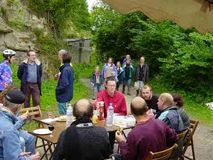
« Raising awareness » : « Discover to love and protect »… By means of guided walks, conferences, voluntary action days of manifestations, the LIFE Hélianthème project will help the broad public discover all of this small microcosm of dry meadows and rocks.
« follow-up » : Beside the restoration of meadows and rocky environments, the LIFE Hélianthème project’s challenge is to provide structures that will help manage and ensure permanent actions. An after-LIFE conservation plan will be set up in order to list the means to be provided to meet this challenge. From the start of the project, things will be thought over, especially on the complete aspect of grazing.



